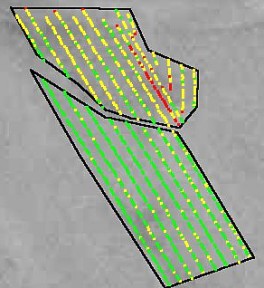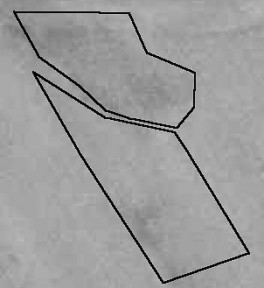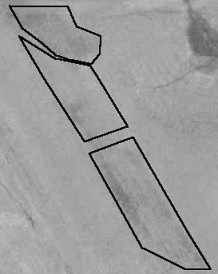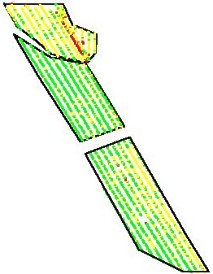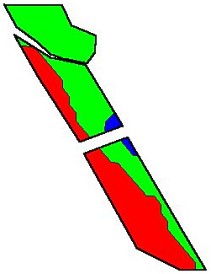|
|
|
|
The area on top is 1.31 acres of very highly eroded Marshall soil. This area yielded 105 bu/A This is one area we plan to haul soil out of the bottom and put a layer of about 4 inches of good topsoil over it. The bottom area is 1.82 acres of highly eroded Marshall soil. This area yielded 156 bu/A |
The above image shows a 3/30/91 aerial image which shows dark areas that are historically wet spots. These wet spots are generally highly eroded. |
